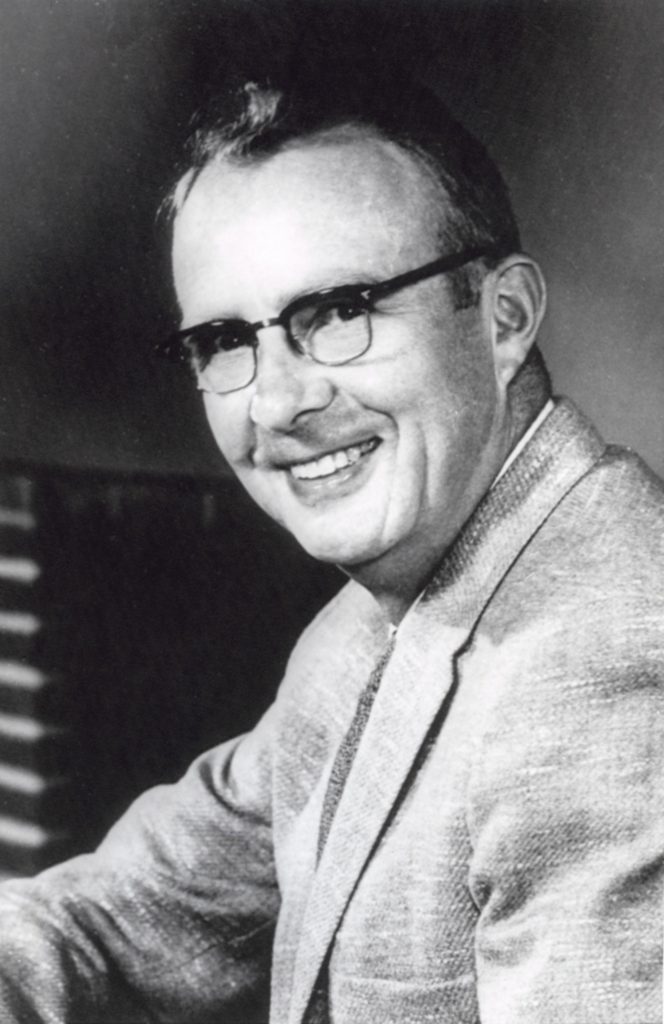Luis Alvarez (1911-1988) was an American experimental physicist and winner of the 1968 Nobel Prize in Physics.
In 1940, he went on leave from the University of California at Berkeley to join the Radiation Laboratory of the Massachusetts Institute of Technology, where he worked on radar systems. He joined the Manhattan Project at the Metallurgical Laboratory of the University of Chicago in 1943. Alvarez helped operate Chicago Pile-2 and also designed instruments that could be flown over Germany to detect if the Germans had constructed nuclear reactors for their atomic bomb program.
Alvarez moved to Los Alamos in 1944, where he was responsible for conducting implosion tests at Bayo Canyon. He was a member of Project Alberta, and observed the Trinity Test from a B-29. He flew on The Great Artiste as a scientific observer to the Hiroshima bombing.
Scientific Contributions
Alvarez was awarded the Nobel Prize in Physics in 1968 “for his decisive contributions to elementary particle physics, in particular the discovery of a large number of resonance states, made possible through his development of the technique of using hydrogen bubble chamber and data analysis”. He is also known for his 1980 hypothesis, developed with his geologist son Walter, that an asteroid strike was responsible for the extinction of the dinosaurs 65 million years ago.
For more information on Alvarez’s scientific achievements, visit the Nobel Prize website.
1911 Jun 13th Born in San Francisco, California.
1932 Received his B.S. from the University of Chicago.
1934 Received his M.S. from the University of Chicago.
1936 Received his Ph.D. from the University of Chicago.
1936 Joined the Radiation Laboratory at the University of California as a research fellow.
19401943 Took leave from University of California, Berkeley and joined the Radiation Laboratory at the Massachusetts Institute of Technology.
1943 Worked at the Metallurgical Laboratory of the University of Chicago.
19441945 Worked at the Los Alamos Laboratory of the Manhattan District.
1947 Designed and constructed the University of California, Berkeley’s 40-foot proton linear accelerator.
1951 Published the first suggestion for charge exchange acceleration, leading to the development of the “Tandem Van de Graaf accelerator.
1968 Awarded the Nobel Prize in Physics “for his decisive contributions to elementary particle physics, in particular the discovery of a large number of resonance states, made possible through his development of the technique of using hydrogen bubble chamber and data analysis.
1946 Awarded the Collier Trophy by the National Aeronautical Association for the development of Ground-Controlled Approach.
1947 Received the Medal of Merit.
1960 Named “California Scientist of the Year” for his research work on high-energy physics.
1961 Received the Einstein Medal for his contribution to the physical sciences.
1964 Received the National Medal of Science for contributions to high-energy physics.
1965 Received the Michelson Award.
1987 Received the Enrico Fermi Award from the US Department of Energy.
1988 Sep 1st Died in Berkeley, California of cancer.





